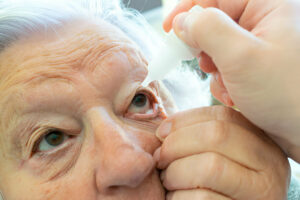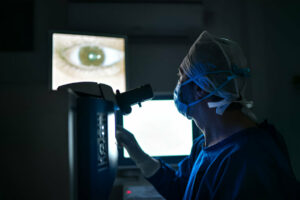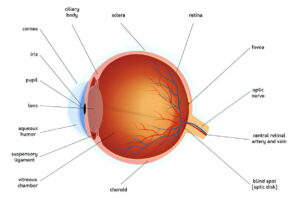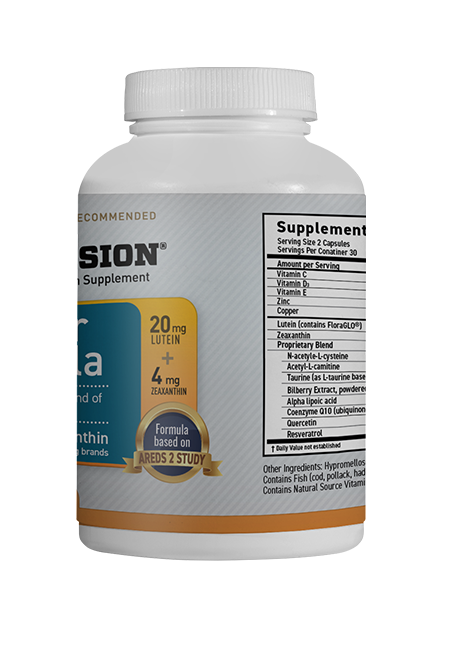High cholesterol has long been known to negatively impact heart health, but this fatty substance also plays havoc with eyesight. According to independent optician Care Optics, any signs of abnormal lipid levels will first show themselves around or near the eyes.
Flat yellow patches that appear on or around the eyelids are known as xanthelasma palpebrarum lesions and contain both fat and cholesterol.
Xanthelasma
Xanthelasma are yellow-tinged fatty deposits located around the eyes that appear as yellow lesions. They typically cluster near the inner corners of both upper and lower eyelids. Though not harmful, some patients choose to have these unsightly lesions removed as they can be unsightly and cause high cholesterol levels; diet or medication to lower cholesterol may be recommended in such cases; they could also be caused by other conditions like fibromyosial syndrome, thyroid disease, Cushing’s syndrome or pancreatitis.
Xanthelasma is an umbrella term derived from two Greek words, “yellowish” and “plate”, respectively. Common manifestations of xanthelasmas include semisolid papules or plaques with cholesterol deposits in skin areas like the medial edge of upper eyelids. Most cases, xanthelasmas are harmless and do not interfere with vision.
A 36-year-old Caucasian woman presented with symmetric, well-demarcated yellowish skin lesions on the inner edge of both upper eyelids that had persisted for two years without pain or any apparent cause. She had a history of type 2 diabetes mellitus, migraine, nicotine dependence and bipolar disorder and was currently taking quinapril, insulin aspart injection and sumatriptan – laboratory tests were unremarkable.
Histologically, xanthelasmas consist of foamy histiocytes with nonmembrane-bound lipid vacuoles and cholesterol crystals in both the dermis and superficial subcutaneous fat. Their lack of fibrosis sets them apart from other cutaneous xanthomas. While surgery for xanthelasmas is typically not advised unless symptoms worsen with lifestyle changes and lifestyle adjustments alone; occasionally they may be treated surgically with laser ablation or liquid nitrogen application under local anesthesia; though these treatments tend to have high recurrence rates but considered effective; pregnant and nursing mothers should avoid such treatments due to risk.
Skin Tags
Skin tags are small, harmless flaps of flesh-colored or slightly darker tissue that protrude from the skin on thin stalks called peduncles. While skin tags can form anywhere on the body, they’re most commonly seen where clothing rubs against or creases against it, or when skin rubs against other body parts or clothing creases or rubs against each other causing friction between clothing or body parts and your skin, as well as tension caused by tight clothing, excess weight gain or hormonal changes associated with diabetes or hormonal changes related to hormonal changes or diabetes related conditions that prevent proper skin protection from happening when coming into contact with clothing creases or ruboff from clothing or body parts rubbing against clothing or body parts causing friction or friction between clothing or body parts which cause friction or rub against each other and causes friction or rub between clothing/body part interactions that causes friction or rub off against clothing/other body parts against each other during contact between.
They’re typically painless and won’t change, but can cause irritation if rubbed against by jewelry, clothing or hair. Bleeding may occur and zippers or accessories could get caught in them; while they are considered harmless by most people, some opt to have them removed for cosmetic reasons or when irritation from jewelry or clothing is experienced.
Pressure applied directly to skin tags has been shown to effectively decrease blood flow, eventually removing them within three to six days. A recent clinical trial conducted with 177 patients who had lesions found that using this device decreased the rate of blood flow to lesions while increasing chances of successful removal.
Skin tags can be easily treated at Dr. Heaton’s office using a straightforward procedure involving liquid nitrogen, cutting off their stalk, or electrosurgery (burning with an electric current). In some instances if skin tags become irritating or cosmetically undesirable they can even be tied off to block off their blood supply and cut off completely for $150-200 at either a private clinic or dermatologist – another form of treatment not covered by MSP is tie-off which should only be performed when necessary and would incur no costs from MSP; other lesions we treat include milia cysts chalazia/styes which MSP covers these costs as well.
Ptosis
Ptosis, in which the upper eyelid begins to droop, is a condition which affects people of all ages and can have both cosmetic and functional ramifications. Ptosis often results in tired or sad-looking appearances while blocking part of a pupil’s visual field; severe cases may even lead to amblyopia (lazy eye) and astigmatism requiring further medical treatment.
Ptosis, or eyelid lifting dysfunction, typically develops due to age-related changes in the muscles that lift eyelids. Other possible causes for ptosis may include injuries and side effects from certain medications or surgeries; it’s even possible for Horner syndrome – whereby migraine headaches cause the nerve that controls eyelid movements to swell and droop during migraine headaches – to play a part in its cause.
Congenital Ptosis is one of the most prevalent forms of Ptosis. It’s caused by an abnormal development of the levator palpebrae superioris muscle that controls eyelid elevation, typically starting before birth. Congenital Ptosis usually affects one or both eyelids from birth.
Ptosis can be treated surgically by tightening or connecting the levator muscle with another muscle that lifts the eyelid, either alone or as part of blepharoplasty surgery. The procedure can be completed in an outpatient surgery center under local anesthesia and the aim is to create a more awake and alert look while also restoring full field vision. Patients typically report improved confidence and self-esteem following repair as well as decreased risks like amblyopia and astigmatism. Xanthelasma lesions associated with ptosis repair are difficult to treat using medications alone and surgical excision may be necessary.
Ectropion
Ectropion occurs when one eyelid turns outward, typically the lower lid. This causes its lashes to rub against the cornea, leading to irritation and watering in the eyes. While most commonly experienced among older adults due to relaxed muscles and tendons in their eyelids, congenital ectropion has also been documented among infants (congenital), individuals suffering facial paralysis such as Bell’s palsy, or those with scarring that alters how an eyelid rests against it.
Doctors typically diagnose ectropion through visual inspection of eyelid and eye. He or she will inquire into symptoms, such as gritty sensation in eye (foreign body sensation), dryness of the eyelid, excessive tear secretion or feeling something is lodged inside one’s eye.
When dealing with an ectropion caused by muscle weakness or facial paralysis, doctors can use surgery to tighten muscles or remove loose skin. The treatment has proven very successful.
Congenital ectropion or conditions like trachoma may have genetic causes; other times, however, damage to muscles and tendons due to surgery or injury could also contribute. Tangier disease – an inherited disorder marked by depositions of high-density lipoprotein cholesterol esters – could also play a part; without treatment this could result in permanent vision loss and corneal ulcers as well as intense eye pain; eye drops or ointments can help with discomfort; the most effective course of action would be having the ectropion corrected surgically.
Entropion
Entropion, in which an eyelid turns inward against the cornea causing eyelashes to rub against it and rub against eyes, causing irritation and possibly infections in eyes. Causes for this condition can include age-related eyelid laxity, facial nerve paralysis and scarring – symptoms include redness and itching of eyes as well as dryness and itching of eyelid skin, as well as tears not dispensing correctly over surface of cornea.
This condition can be treated surgically or by using lubricating drops to help reduce friction between eyelashes and cornea. However, its source should also be identified so as to avoid future complications.
Entropion occurs most commonly as a result of weakening of the small muscles that control eyelids (known as orbicularis oculi muscle). This condition is known by several names: involutional, spastic or congenital.
Ocular exams will typically detect this condition by looking for symptoms like chronic eyelid inflammation, itching, dryness or ulceration. Once identified, this issue can be treated through a quick surgical procedure taking less than 30 minutes: the eyelid will be numbed with local anesthesia before muscle tightening is performed to reposition its position and restore functionality.
Most lid surgeries are conducted in our office while you are awake and involve placing stitches at the corner of your eyelid. While you might experience swelling or bruisedness for several weeks afterward, to alleviate discomfort we will use a button bolster to evenly distribute pressure across sutures for the first few days afterward and help them feel less bulky on your eyelid.





